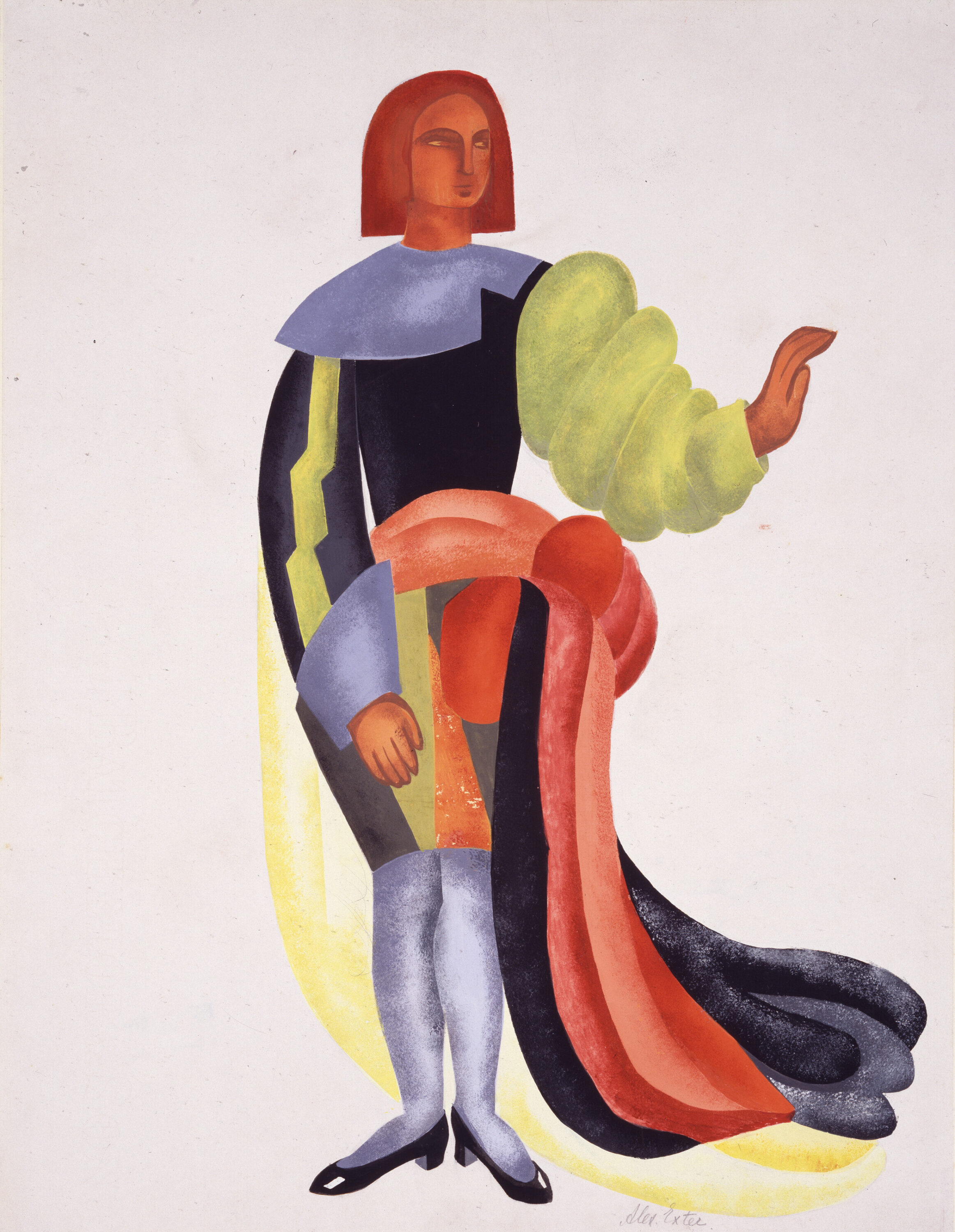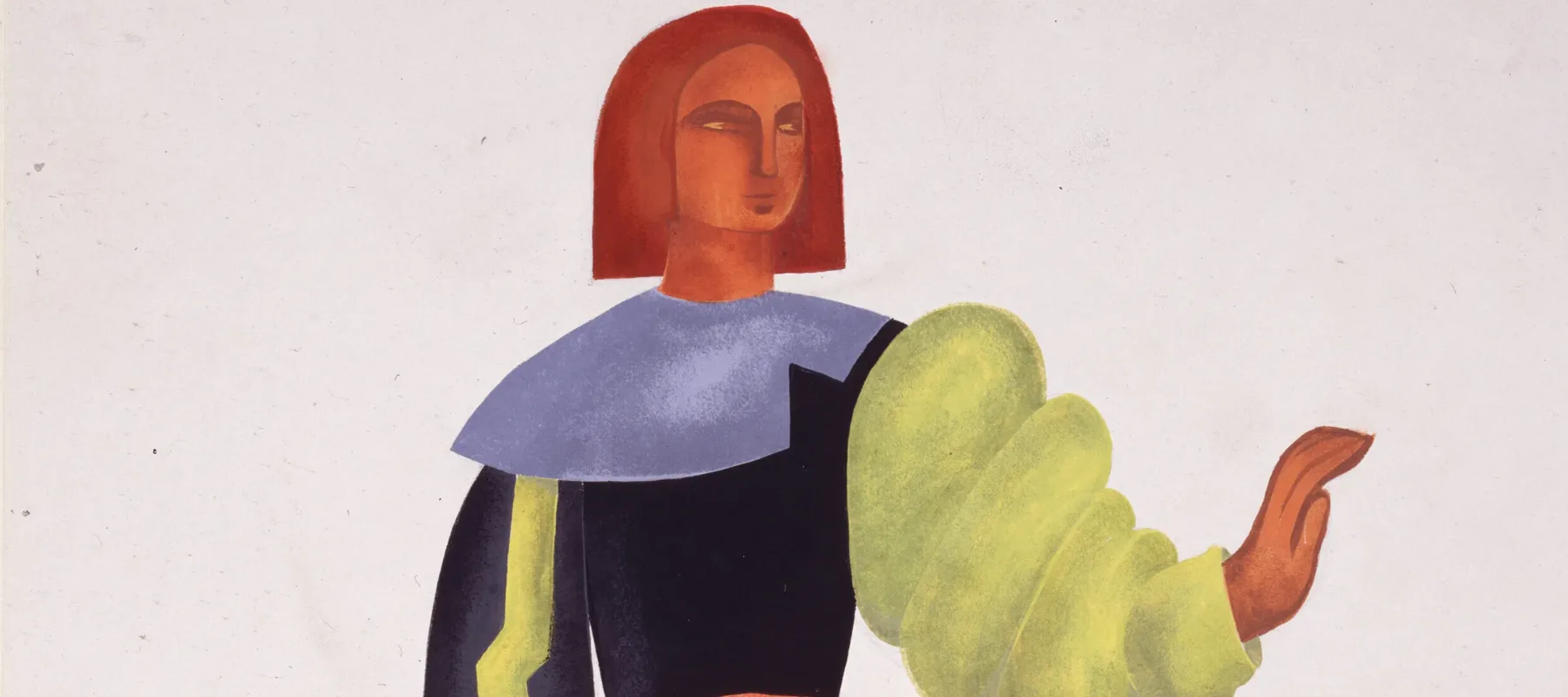Happy Birthday Alexandra Exter! Impress your friends with five fast facts about the Russian and French painter and designer (1882–1949), whose work is part of NMWA’s collection.
1. Nuanced Nationality
Alexandra Exter was born in Białystok, a city once part of the Russian Empire that is now in Poland. She spent significant time in Kyiv as part of Ukrainian arts and intellectual circles. Exter emigrated to Paris in 1924, where she lived the rest of her life teaching and exhibiting.
2. Early Influencer
The artist was influenced by Cubism, Futurism, and Constructivism, but her style can’t be categorized into just one movement. She took her work further into the avant-garde by using industrial materials, bold colors, and innovative techniques. She inspired much of the Art Deco movement in the 1920s and 30s.
3. Setting the Stage
Exter created costumes and sets for plays, ballets, and experimental films. Her costumes were featured in performances of Shakespeare’s Romeo and Juliet and Othello, as well as Oscar Wilde’s Salomé. In 1925 she created “epidermic” costumes for a ballet, using body paint instead of clothing, paving the way for future fashion inventions.

4. Queen of Mars
She also created costumes and set designs for Aelita: Queen of Mars, a 1924 science-fiction film based on a novella by Aleksey Tolstoy, distant cousin of Leo Tolstoy. The film is remembered for Exter’s sculptural Martian sets and costumes, made using acrylic, aluminum, glass, celluloid, and sheet metal.
5. Going Miniature
In the early 1920s, Danish filmmaker Peter Urban Gad commissioned Exter to created 40 marionettes for a film that was ultimately never made. She produced 20 designs, which represent characters from the Italian commedia dell’arte. Nechama Szmuszkowicz (1895–1977) constructed the puppets using found materials including fabric, wood, plastic, and metal.
